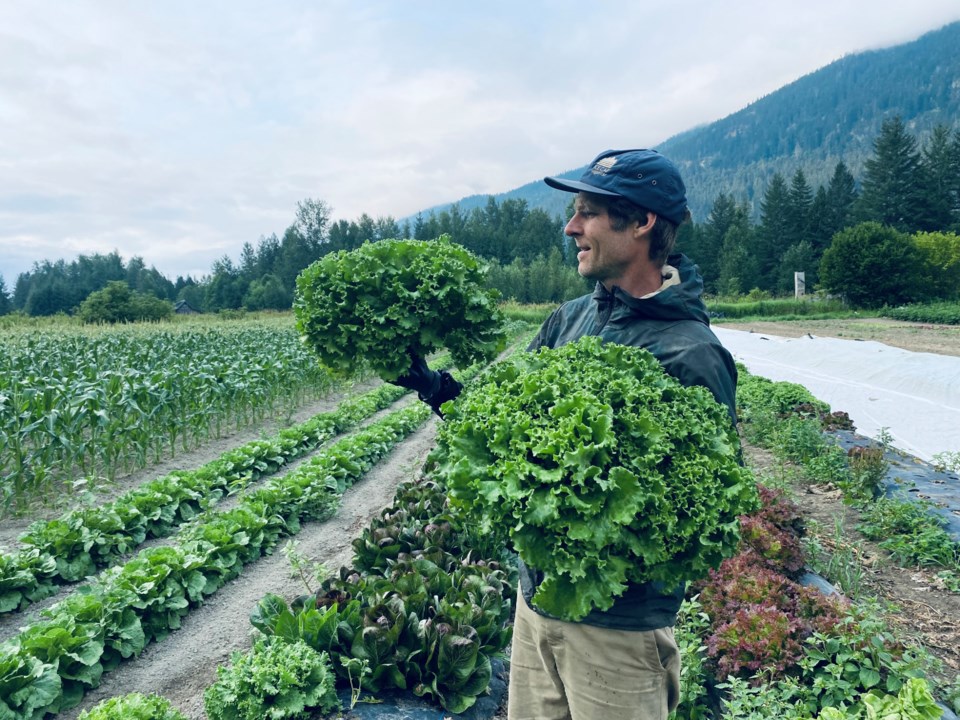You use it in nearly every salad you make. Burgers—and most sandwiches—wouldn’t be the same without it. Or, if you’re like me, and simply love eating leaves, you’ll grab it just for snacking. Better than chips!
Some people call lettuce the un-sexiest veg on the plant, or at least an underdog. As for me, I love it and have always thought it’s vastly overlooked. Then I loved it even more once I started researching this column.
The name “lettuce” is from Middle English via the Latin lactuca, with lac meaning “milk,” because of its milky juice. But the more surprising bits are embedded in its provenance.
Lettuce has probably been cultivated for at least 5,000 years, first by the ancient Ancient Egyptians for the oil from its seed. It can handle bio-geoclimatic zones from the tropics to the Arctic. And early documentation from the late 1800s shows an amazing array of more than 1,000 different types of named lettuces, even back then, with maybe 140 true types in seven different cultivars or varieties. Like leaf or bunching lettuce; romaine or cos (for the Greek island of Kos); and crisphead or iceberg (the best-selling lettuce in the U.S., one originally transported in crushed ice, ergo the name). Butterheads like Boston and Bibb, plus celtuce grown for its stalks in Asia, oilseed lettuces still used for their oil, and more.
Turks enjoy their fine Maruli lettuce, and Koreans their sang-chi-sam (lettuce lunch). Still, lettuce seldom ranks high on most people’s food-radar unless, like I did, you get your hands on an amazing sample, which means a locally grown one.
My lovely lettuce came from Ice Cap Organics. It was so beautiful (a perfect fan of deep green ruffled leaves with slight sea-blue notes), and delicious (tasty and crunchy, without being bitter or tough) that I dialed up Delaney Zayac. He and his wife, Alisha, have owned and operated their five-acre farm in Pemberton for 15 years, after they both were tree planters.
First thing Delaney asked for was a photo. Dang! It was so yummy we’d gobbled it up in one go, so he had to rely on my verbal description. But he’s pretty sure it was the Tropicana variety from Johnny’s Selected Seeds, a non-GMO supplier in Maine.
“It’s a pretty classic green-leaf variety but I don’t see it in the grocery stores a lot,” Delaney says. Keep in mind that lettuce grown in California or Mexico, where most of B.C.’s produce comes from, especially in winter, may spend up to four weeks, or more, in cold storage before it hits a store shelf!
“As you say, it gets really big and thick and crunchy, but it doesn’t get tough or bitter. And it handles heat really well…”
Heat, moisture levels, soil type and conditions—all of these factor into what farmers like Delaney and Alisha have to consider when choosing their crops. Especially things like the crazy heat and drought farmers everywhere have been dealing with as the climate crisis worsens. Ice Cap fields hit temperatures over 50 C more than once two summers ago, when Lytton burned down, and already they’ve faced several 40-plus C days this year.
“The thing is, when you grow stuff you have to choose what grows well in your location and it’s different everywhere,” he says. “Even in different parts of Pemberton, people will choose different varieties for different reasons.”
Then there are differences in farmers’ habits and the ways they manage their fields, plus the Zayacs know what their customers want. Probably most people in Sea to Sky know them for their CSA (Community Sustained Agriculture) harvest boxes, where you sign up online for a full or half-season and pay in advance to enjoy their 100-plus varieties of fresh, organic produce delivered to your door. But, surprisingly, Ice Cap’s biggest market is the West End Farmers’ Market, where I bought my spectacular lettuce, so they choose varieties that suit those customers.
Tropicana may be beautiful in their hands—see those gorgeous heads, above? Those were started in the greenhouse then transplanted as seedlings into the ground about a month ago. But that’s just the start. They also grow green butterhead; red butterhead; green and red leaf lettuces; a French variety called panisse, which is a lighter green, and very lobed; and, of course, romaine, which everyone loves in Caesar salads (see sidebar), including the Zayacs. Even their kids, Ira, 13, and Annika, 11, have loved lettuce since they were young.
“Every day we eat salad for at least one of our meals, and usually there’s a lettuce involved... We eat all the different ones, because they’re all there, so we probably go through at least four heads of lettuce a week,” Delaney says.
Something we all could take a lesson from. Experts and non-experts alike are telling us to eat ourselves “younger” by eating way more fresh greens—and lettuce is right up there.
All hail Caesar!
Who doesn’t love a Caesar salad, starring crispy romaine lettuce? Count me in, especially after living in San Diego for years. We’d often visit the greyhound racetrack in Tijuana, Mexico, and one night after the races we hit Caesar’s Restaurante-Bar. There the first Caesar salad was created in 1924, by Caesar (Cesare) Cardini, an Italian immigrant who moved his business across the border when Prohibition hit. Hollywood stars loved Tijuana in the ’20s, and the story in San Diego was a couple of glitzy couples waltzed in afterhours demanding something to eat after the kitchen—and racetrack—were closed. Creative Caesar whipped up the first Caesar salad, using cut-up toast for croutons. The more official version says he made it after the kitchen ran out of ingredients. So, no, the Caesar salad is not from Rome. BTW, you should use lime, not lemon juice, for the dressing.
Glenda Bartosh is an award-winning journalist who ate her first Caesar salad at the Beverly Hills Hotel.




